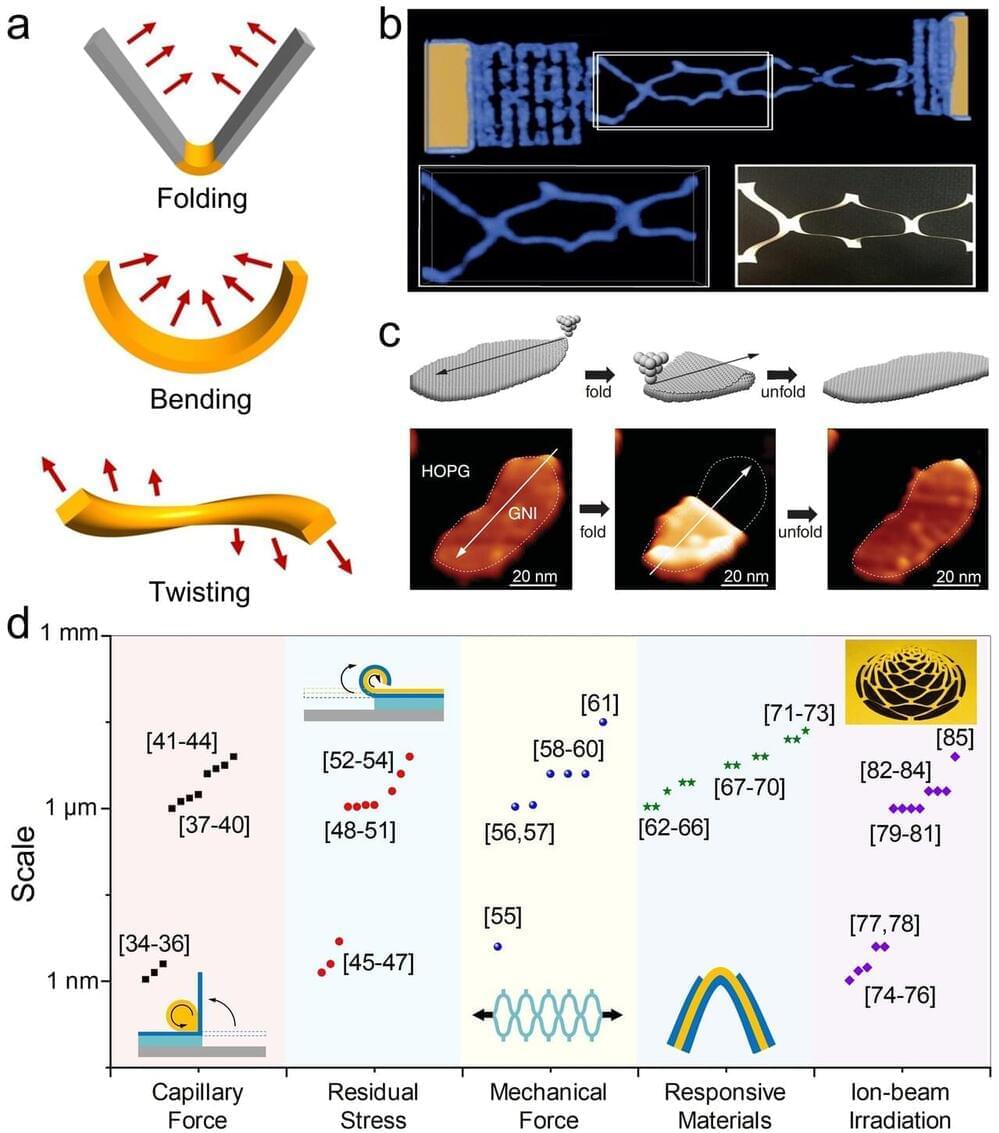3D micro-/nanofabrication holds the key to building a large variety of micro-/nanoscale materials, structures, devices, and systems with unique properties that do not manifest in their 2-D planar counterparts. Recently, scientists have explored some very different 3D fabrication strategies such as kirigami and origami that make use of the science of cutting and folding 2-D materials/structures to create versatile 3D shapes. Such new methodologies enable continuous and direct 2-D-to-3D transformations through folding, bending and twisting, with which the occupied space can vary “nonlinearly” by several orders of magnitude compared to the conventional 3D fabrications. More importantly, these new-concept kirigami/origami techniques provide an extra degree of freedom in creating unprecedented 3D micro-/nanogeometries beyond the imaginable designs of conventional subtractive and additive fabrication.
In a new paper published in Light: Science & Applications, Chinese scientists from Beijing Institute of Technology and South China University of Technology made a comprehensive review on some of the latest progress in kirigami/origami in micro-/nanoscale. Aiming to unfold this new regime of advanced 3D micro-/nanofabrication, they introduced and discussed various stimuli of kirigami/origami, including capillary force, residual stress, mechanical stress, responsive force and focused-ion-beam irradiation induced stress, and their working principles in the micro-/nanoscale region. The focused-ion-beam based nano-kirigami, as a prominent example coined in 2018 by the team, was highlighted particularly as an instant and direct 2-D-to-3D transformation technique. In this method, the focused ion beam was employed to cut the 2-D nanopatterns like “knives/scissors” and gradually “pull” the nanopatterns into complex 3D shapes like “hands”.
